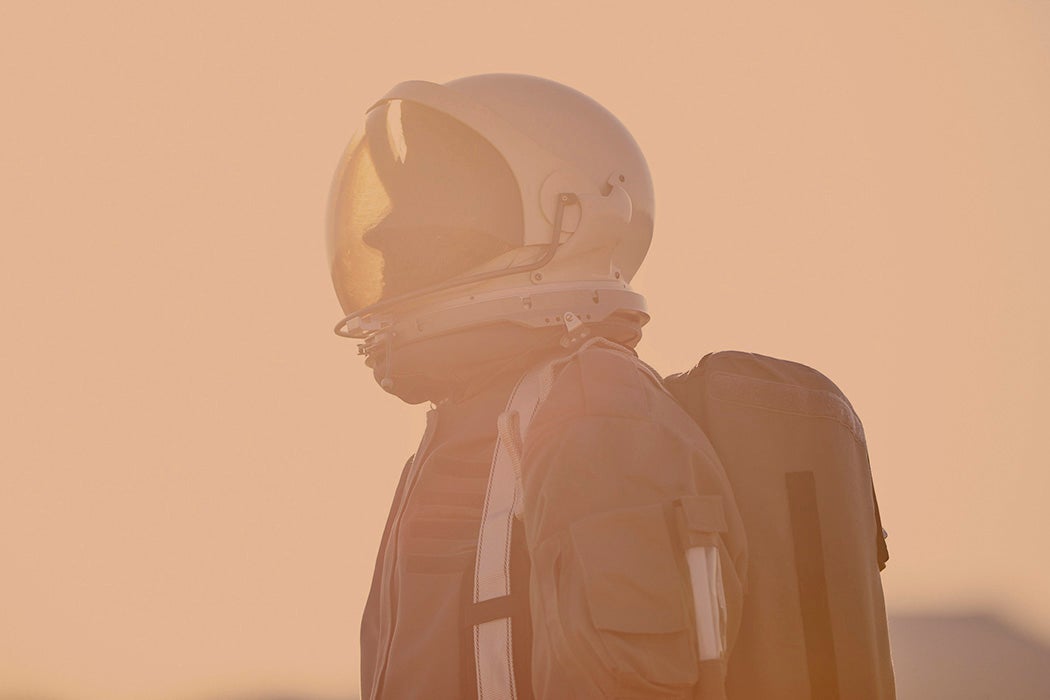Space travel: it’s all the rage for the ultra-wealthy. Fueled by an increasing supply of billionaire- (and taxpayer-) funded rockets and a growing demand from the 1 percent, the commercial space industry is eager to launch. But the promise of commercial spaceflight raises questions about how untrained “space tourists” will endure the extreme hostility of space. While billionaires may get to live out astronaut dreams, one thing they undeniably lack is the rigorous training of NASA’s best and brightest.
We know that space takes a toll on the body. It’s an extreme place—not a whimsical, starry wilderness. Historian Roger Launius tells the story of astronaut Gene Ceman, who conducted a spacewalk in 1966 off the Gemini 9A spacecraft. It was only the second time an American astronaut had “ventured outside of a capsule to expose the body to the extreme environment of space,” writes Launius, “and it proved nearly fatal.”
According to Launius, “Cernan quickly learned that anything he did in microgravity took more energy than anticipated and his body overheated.” This excess heat fogged up his visor, and the excess sweat caused him to lose nearly ten pounds from dehydration. At that moment, Launius writes, “NASA learned a valuable lesson about the fragility of the human body in the extreme environment of space.”
Lifting off into a microgravity environment can cause disorientation, perceptual illusions, poor coordination, and issues with whole-body movements. Space motion sickness is common, as is loss of appetite, fatigue, insomnia, dehydration, dermatitis, and back pain. To compensate for this fragility, professional astronauts undergo years of rigorous training and extensive medical tests before launching into orbit.
Space tourists, on the other hand, will not be trained like professional astronauts. As the cosmos open up to a wider array of visitors, doctors and experts in space medicine are faced with a new medical challenge: assessing medical risk for untrained bodies in space. That’s why healthcare professionals Marlene Grenon, Joan Saary, Gary Gray, James Vanderploeg, and Millie Hughes-Fulford created an outline of “what doctors will need to know” about space medicine, including a table with hypothetical spaceflight considerations for common medical entities. Considerations like:
How long after a hip replacement can my patient safely embark on a ballistic two-hour flight to Australia? Can my patient with stable angina and a pacemaker for complete heart block participate in a suborbital Virgin Galactic flight? What is the maximum allowable time my patient with osteoporosis can spend on a planned vacation at a space hotel?
“The whole medical encyclopaedia may need to be redefined for the conditions of space travel,” write Grenon and coauthors. Clinicians should recognize that “there are risks associated with spaceflight, that spaceflight causes changes in normal physiology, and that spaceflight is likely to affect abnormal physiology and disease conditions, although the exact nature of these effects is yet to be determined.”
Weekly Newsletter
Crews of commercial spaceflights must be proven capable of withstanding g-forces involved in launch and landing. But what about if they have cancer, deep vein thrombosis, or a history of cardiovascular disease? As of 2020, requirements of space passengers remain vague, beyond requiring informed consent. “Perhaps,” write Grenon et al., “because experience in aviation medicine has shown that over-regulation could inhibit development of the sector.”
Support JSTOR Daily! Join our new membership program on Patreon today.







